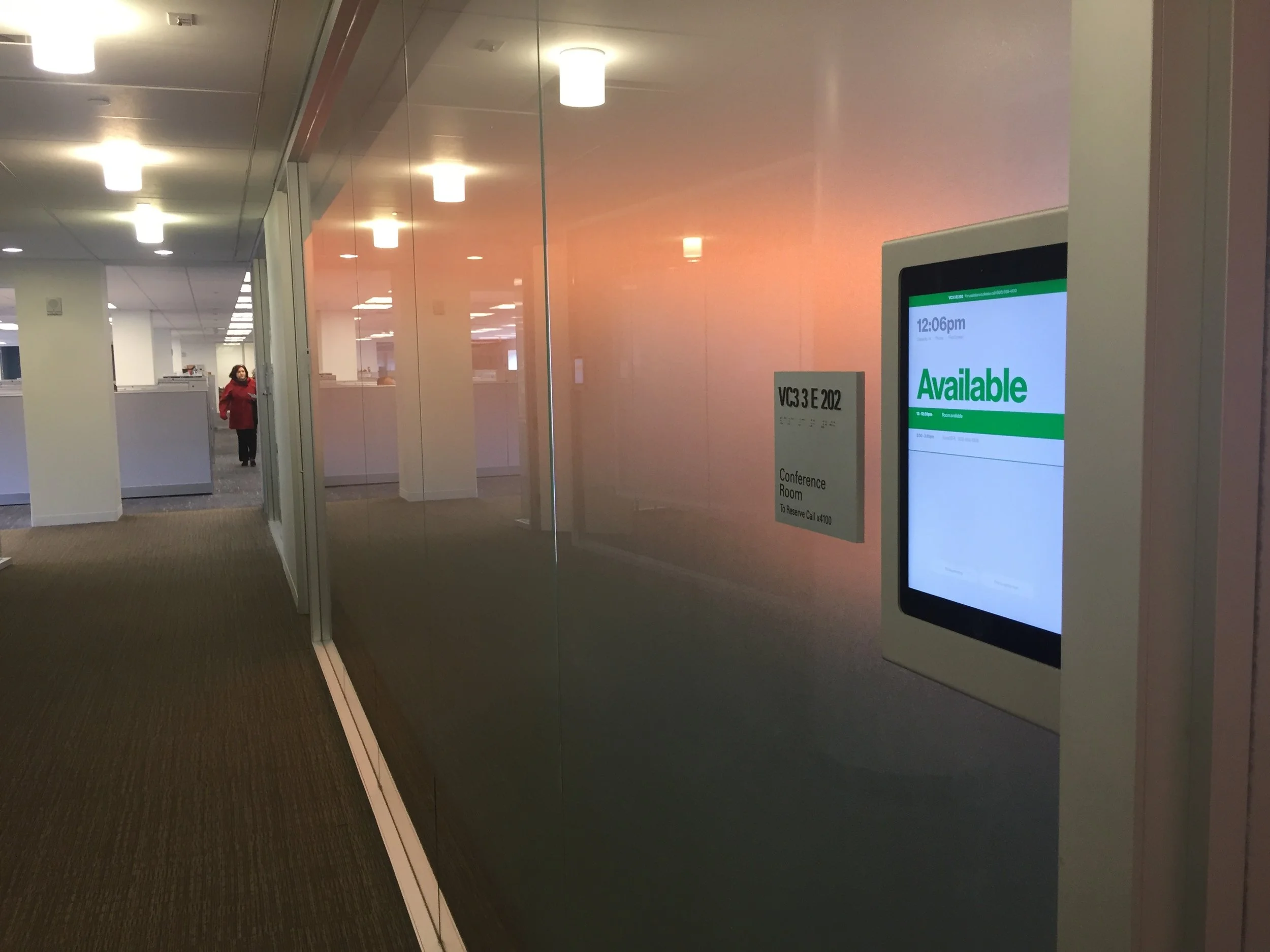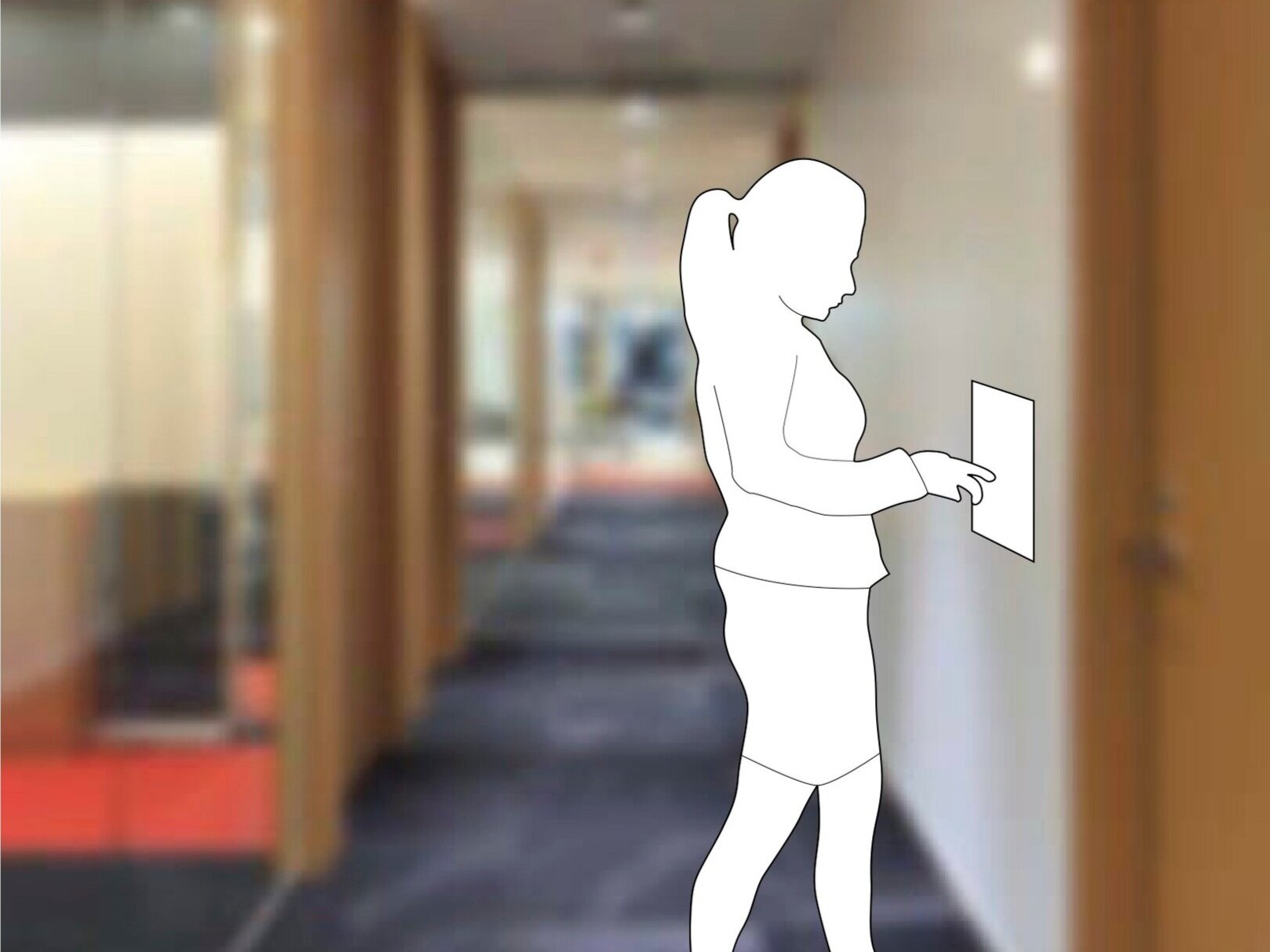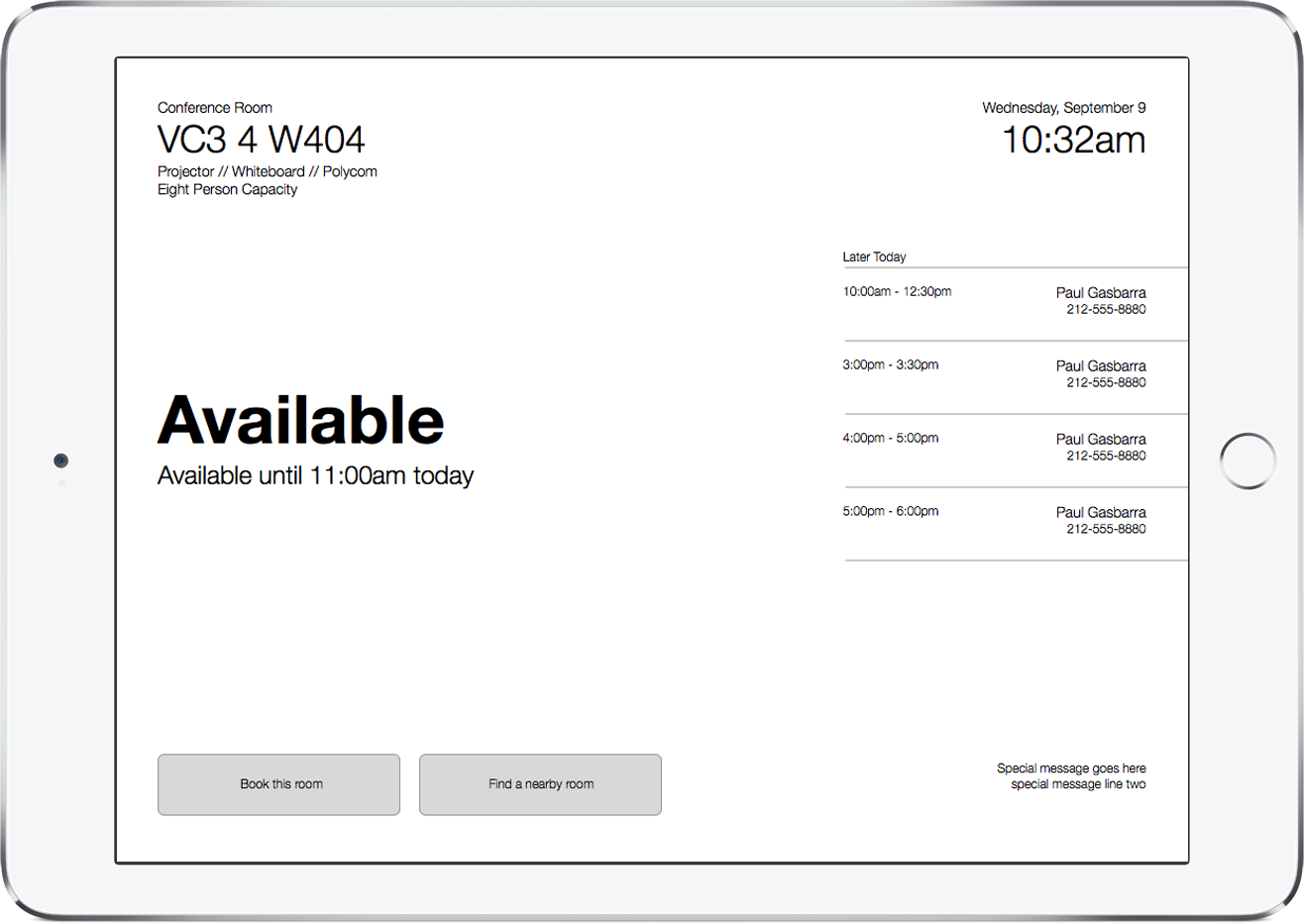Verizon SmartHub Platform (Intersection)
Reimagining meeting space for a modern working environment.
2015
Challenge
The Verizon Global Real Estate Team (GRE) engaged Intersection to design a technology solution that made booking meeting rooms more efficient at Verizon’s global HQ in Basking Ridge, NJ. The goal was to maximize the utility of existing conference rooms, and, in the process, to understand more fully how their office space was being used. How could we use technology to make meeting spaces easier to use, and deliver better usage data?
My Role
As the UX Lead, I first sought to understand the challenges facing meeting room users. I led a round of discovery that included stakeholder interviews, and an audit of the office environment, processes, and technology. We learned that one of the key frustrations facing users is the artificial sense of scarcity. Many times, conference rooms seemed booked online, but in reality went unused. Expensive workarounds had been put into place to address this issue, with little success.
Concept
To address this disconnect, our team developed a concept called SmartHub. SmartHub augmented the existing conference room booking software with an in-room occupancy sensor and a room-side display. The idea was to generate a real-time room status based on both the reservation data from the booking software and the room occupancy sensor, and display that status on the room side display.
Image credit: Mike Clare
Sketching & Product Strategy
As the UX Lead, I drove quick prototyping and design iteration on weekly sprint cycles, as well as working with our Product Manager to drive our MVP feature set decisions. One feature we included was “Auto-release”— if the room occupancy sensor did not detect anyone in a booked room for the first seven minutes of a meeting, it automatically cancelled the reservation and freed the room to be booked by others. With our MVP feature set confirmed, I developed the wireframes and visual design of the first prototype, which we staged for three weeks.
User Research
After three weeks of using the prototype, we circled back with users to find out how the trial was going. We emerged from this stage armed with a robust set of insights. These insights guided our product thinking and our feature list as we scaled our prototype up from 12 rooms on one floor of one building, to hundreds of rooms across the entirety of the Basking Ridge campus.
Design Iteration & Visual Design
As we pushed into production, I worked with a visual designer to make improvements on my UI, while I continued to refine our UX. Having learned in our trial phase how valuable seeing the day’s schedule was, we decided to reorient our app to portrait mode to allow a longer, more visible daily schedule list. As the Design Lead, I managed the visual design to align more closely with Verizon’s newly updated branding guidelines.
UI credit: Matthew Schneider
Results
We deployed the final result to rave reviews. SmartHub enabled the Verizon GRE team to use usage data to make smarter facilities decisions, saving them millions. Verizon employees, too, reported more available conference rooms, making the experience of finding and booking meeting space much easier. Furthermore, SmartHub has been deployed at other key Verizon corporate offices, such as their new design studio in downtown NYC.
“I feel like I work at a technology company”






















